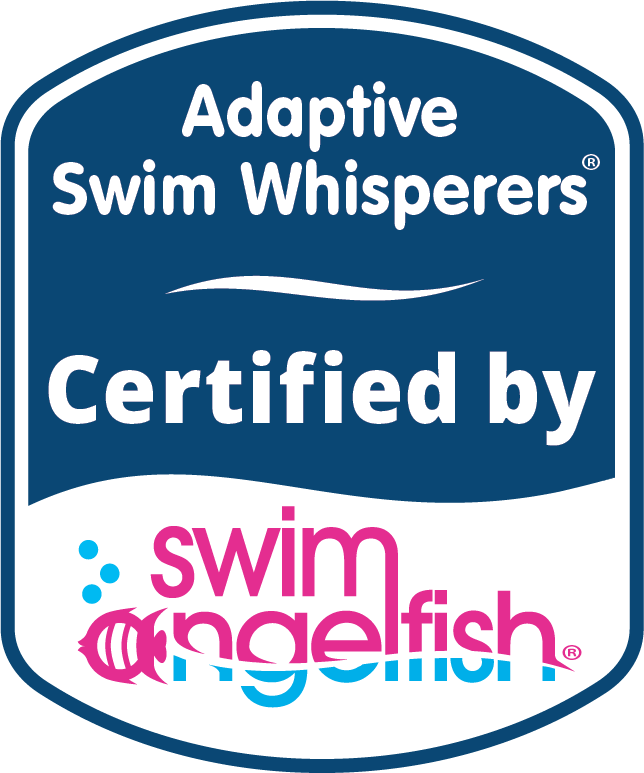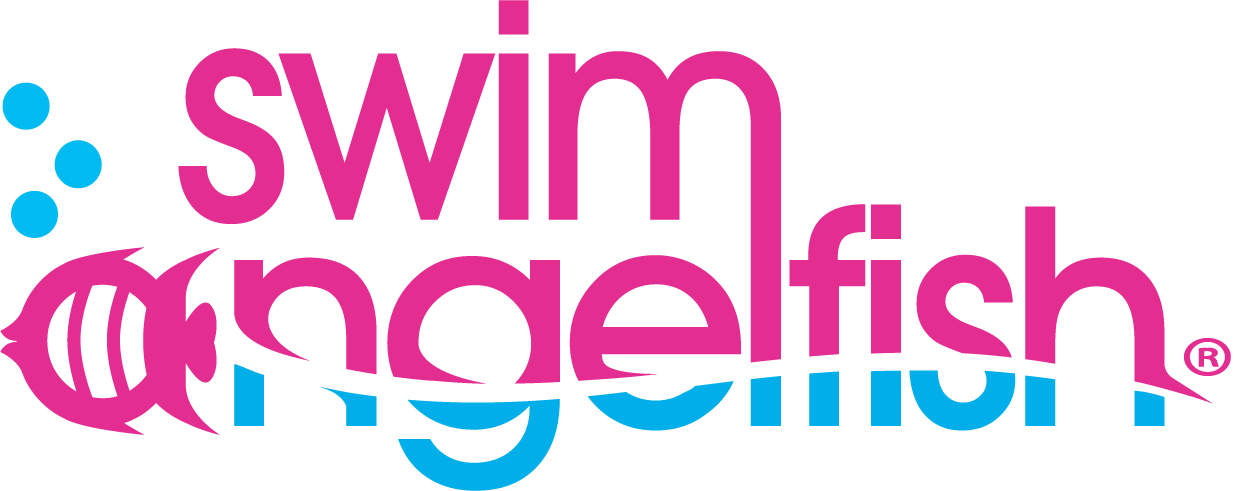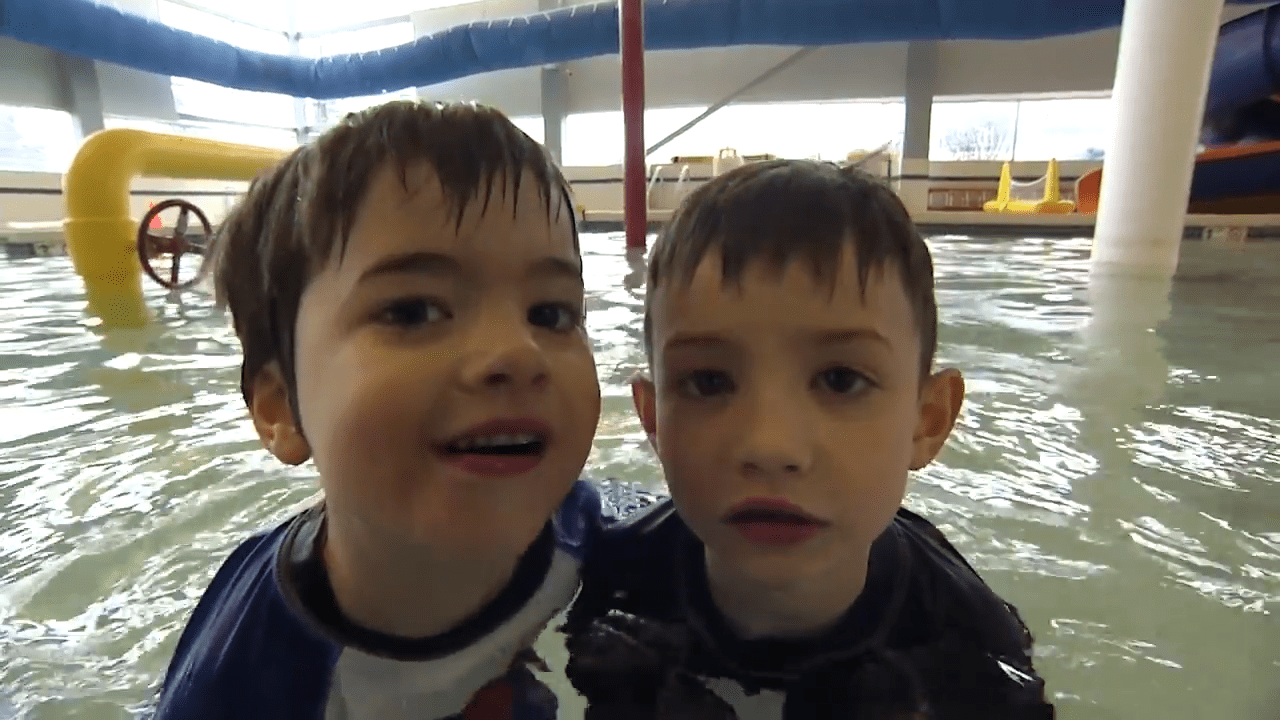
Teaching the lifelong skill of swimming to students of all abilities is the best gift you can give them. When it comes to teaching swimmers who have an autism spectrum diagnosis, we understand that this can be challenging for the swimmer and their parent/caregiver, but also for the Swim Instructor, particularly if they don’t have experience and the right tools and strategies to complement their lesson plans.
We will share advice and time-tested tips for your very next lesson. This will help you to address any underlying problems and overcome obstacles, allowing you to reach swim skill benchmarks faster and with more comfort, using the Swim Angelfish Adaptive Aquatic Methodology.
Can autistic individuals be taught to swim?
At Swim Angelfish, our belief is always ‘You Can’. We believe that every person regardless of ability can learn to swim and become safer in, near, and around water.
We recognize, however, that there can’t be a ‘one-way fits all’ approach to teaching swimming, and this is particularly true for children who learn differently or who are on the autism spectrum.
Learning to swim is a key layer of protection for those with an autism spectrum diagnosis. Together, we can help autistic swimmers to become safer and as independent as possible in the water, by working with them to achieve swim skill benchmarks.
Water safety for swimmers who have an ASD diagnosis
In the US drowning takes an average of 3,500-4,000 lives per year. That is an average of 10 fatal drownings per day (NDPA Drowning Facts). Sadly, the statistics are all too familiar. According to Autism Speaks, drowning is the leading cause of death for children who have an ASD diagnosis, responsible for approximately 90% of deaths as a result of wandering or bolting, in children under 14.
Water is a powerful attraction that can outweigh the protections that parents/caregivers put in place, so it is really important to have good routines and rituals around water.
As an Adaptive Swim Instructor, it is critical to gain effective skills in how to teach kids who have an autism spectrum disorder diagnosis, by using the right approach, tools, and techniques to help improve the outcomes for this vulnerable population. Arming your swim instructors with a toolbox of adaptive aquatic strategies will help them assess and identify swim obstacles and implement effective teaching techniques in their very next swim lesson.
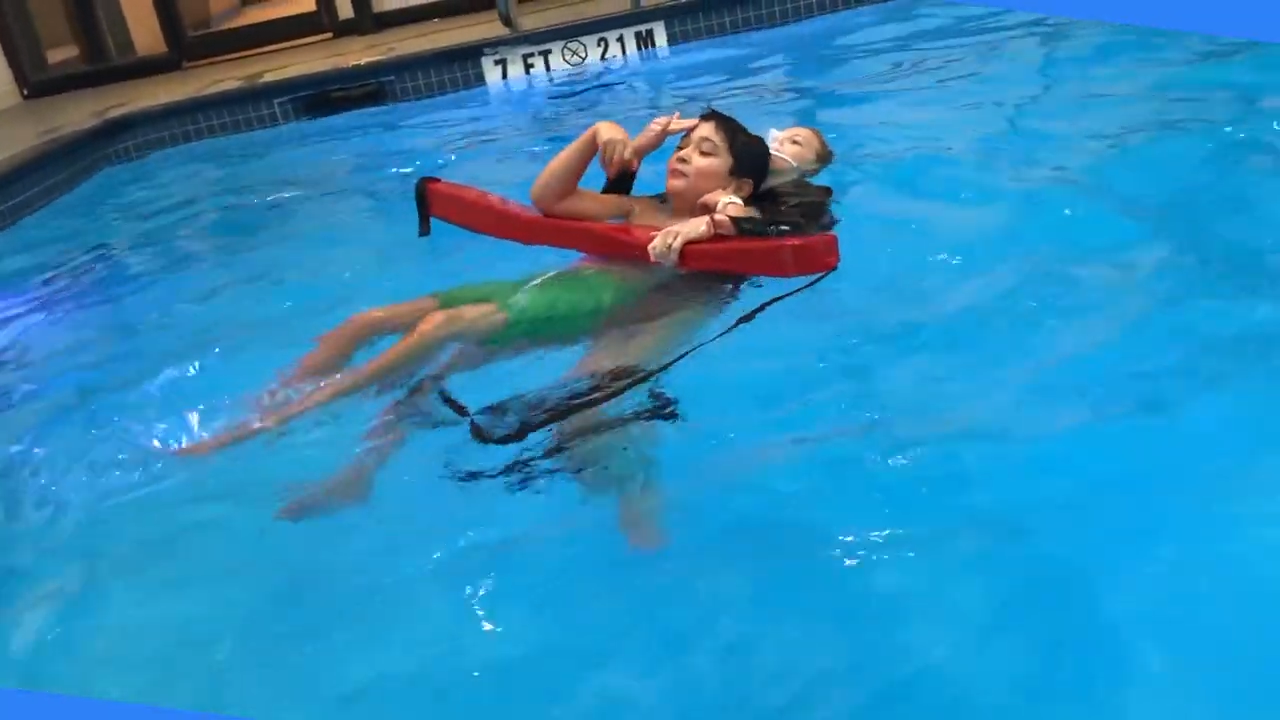
Why do individuals with an autism spectrum disorder diagnosis have a higher risk of drowning?
We have found that 4 main factors contribute to the increased risk of drowning for children on the autism spectrum:
Autism swimming lessons
Whether you are an experienced adaptive aquatics instructor or new to teaching special needs swimming, our advice on how to teach swimming to individuals on the autism spectrum will help to strengthen your swim classes.
Why an individualized approach to swim lessons is important
When teaching an individual on the autism spectrum, it is important to note that this population is uniquely diverse. There is a broad spectrum of characteristics, unique to each individual which requires a personalized approach for every swimmer.
Some swimmers will seek out the water and want to splash, submerge and constantly move. Other swimmers will avoid the water and be reactive, rigid, and difficult to engage.
Some swimmers will not want you to touch them or may have difficulty interpreting touch. This concept is a module in the adaptive aquatic education of the Swim Angelfish Methodology for becoming a Swim Whisperer. We categorized it as a drowning prevention concept because we need all swimmers with an autism spectrum diagnosis to be able to touch and hold rescue equipment in an emergency situation.
The Swim Instructor must be open-minded to the range of their swimmer’s needs. Flexibility within a swim lesson plan for a swimmer with autism is the best approach, as each swimmer will have different cognitive, behavioral, and sensory processing responses. Taking action to learn the safety skills, while also allowing the swimmer to have some control over the activities, will help to improve the overall lesson.
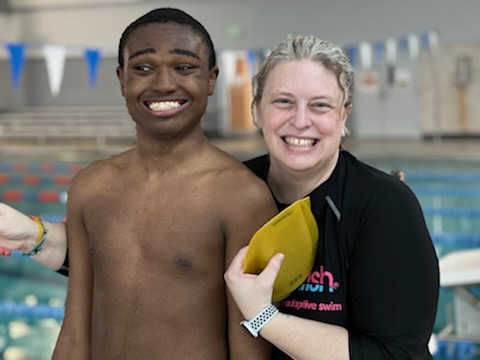
Step One: Know your swimmer
The first step is about understanding each of your swimmer’s unique needs which will inform your decisions about how to progress your lesson, to achieve the swim goal. Offering flexibility within your lesson plan will require self-awareness so that you are weaving in and out of your lesson plan, while at the same time keeping the swimmer engaged.
Before you give your first lesson to an individual on the autism spectrum, ask the parents/caregiver to fill out a questionnaire (intake form) and talk with them to find out about how their child learns best, to help you be better prepared for the swimmer’s specific needs.
Ask questions such as:
If you don’t understand the individual you are with, you won’t be able to give them what they need during their adaptive swim lesson.
Step Two: Flexibility with your teaching style
Once you understand your swimmer’s needs, you can start to flex your teaching style to ensure an enjoyable and successful lesson, where the swimmer makes progress towards their individual swim goal.
Knowing your swim lesson teaching style and how to adapt to other teaching styles in different situations, is a skill that will help to set you apart from other Adaptive Aquatic Swim Instructors.
Ask yourself ‘What can I do differently?’ to help my swimmer achieve a specific goal. Changing your mindset along with educating yourself (watch our free online video What Every Swim Instructor needs to know) can change what is possible for your swimmer. Adaptive aquatic education is key to success.
The 3 main Swimming Instructor Teaching Styles we see are:
Which one do you think is your natural style? Do you think you can adapt to the other styles when required?
Understanding your swimmer’s learning style is equally important, as this will allow you to recognize when you need to step in and out of different teaching styles, responding to your swimmer’s cues, so that they can continue to learn. Can you step outside of your routine to teach skills like changing directions, swim-float-swim, or submerging, by implementing an alternative teaching style if that’s how your swimmer learns best?
Step Three: Build trust
Building trust and taking continuous action with movement strategies are crucial parts of implementing the Swim Whisperer® toolbox. Developed by an Occupational Therapist and Physical Therapist team with over 60 years of combined experience, it is the only program that strengthens your swim curriculum to better teach swimmers who have an autism spectrum disorder diagnosis. Your swimmers, parents, and instructors will work together to create a safer water experience because they have the tools to be successful.
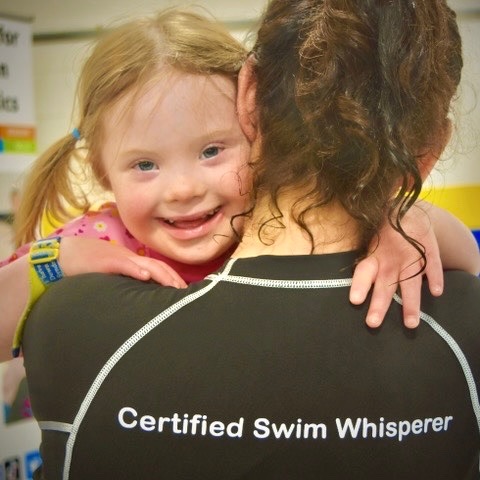
Adaptive swimming lesson plans
Use this knowledge about your swimmer, to help you prepare for your adaptive swim lesson, and don’t forget to use the Swim Whisperer free resource with 14 Swim Tips to turn a lesson into something positive.
If your swimmer is visual, make sure you have pictures and props to hand, you can print these pictures right off of our blog post on making a visual schedule. For some ideas check out the Swim Angelfish Swim Training playlist or watch specific videos like our Breathing Exercises to do at Home to familiarize them with a swim goal. Think about what your swimmer needs, and help them to be prepared for learning.
By purposefully preparing every lesson, for each swimmer, you will be able to set achievable swim goals and make progress in each adaptive swim session, helping your swimmer get closer to safer independence in, near, and around water.
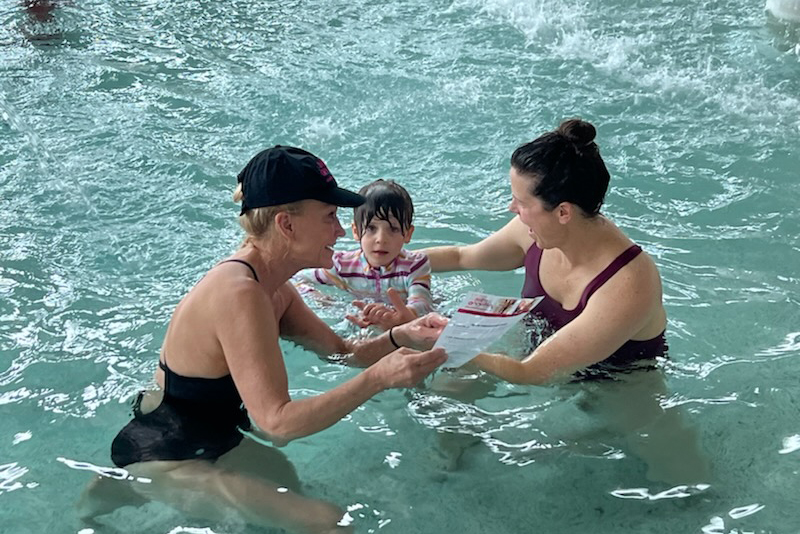
Routines & Rituals
Before getting in the water, it’s really important to create a routine with your swimmer. Creating routines and rituals can give you and the parent/caregiver additional time before their child enters the water, which can be the difference between life and death.
Water safety rituals and routines are developed using a systematic approach, consistency, and clear instructions to help guide the child’s movements.
One simple routine is making sure your child always asks permission from an adult, before entering the bath, pool, or any body of water. If they are not verbal, start making sure that they tap you and look you in the eye, before you allow them to enter the pool or bath. We can give parents and caregivers peace of mind by establishing these rituals and routines and reinforcing them at every lesson.
Learning Safe Behaviors at the Pool and Bolting & Safety are just a few of our free resources that you can watch to give you ideas for creating rituals and routines with your swimmers.
Swim Skills vs. Play Time
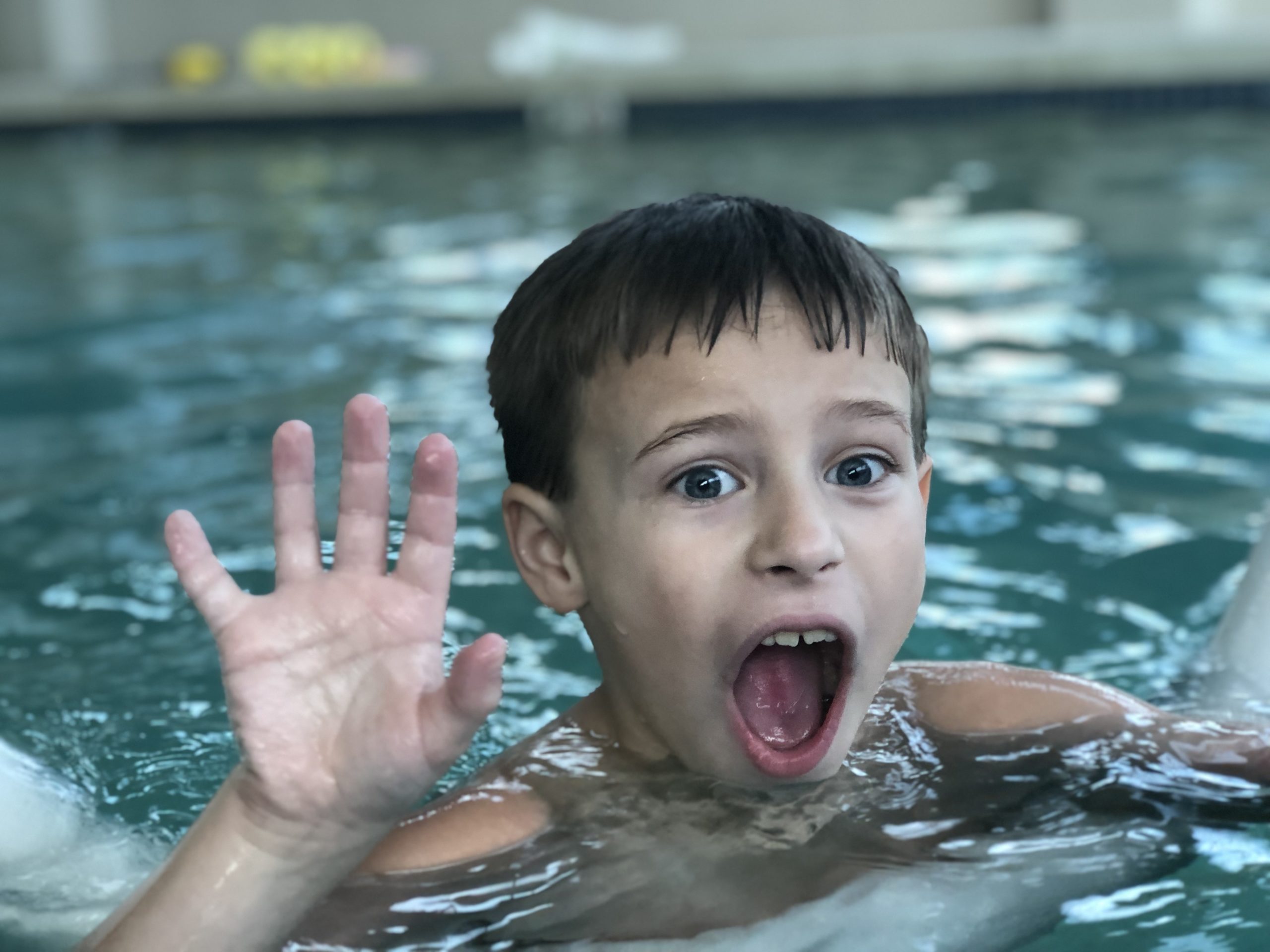
In all learn to swim programs, play is an important part of your swim teaching toolbox. However, play can and should be used purposefully to help teach swim skill benchmarks.
For swimmers on the autism spectrum who are splashing and seeking the water, you might join them in splashing and then say “copy me” and turn the splashing into freestyle arm movements. The act of splashing satiates the sensory seeking and allows them to continue splashing with a swim skill benchmark emerging, as you do the freestyle arm splashing.
Think about how each of your swimmers responds. Do they need rhythm and timing? Do they need Sing-Song Instructions to understand what is next? Do they need a movement like jumping up and down in the water? Or do they need positive affirmations to help them to know they are safe? Giving them what they look like they want and then seamlessly integrating strategies from the adaptive swim whisperers toolbox, is a recipe for success to achieve your learn to swim goals.
Why Play is used in Swimming Lessons for Children who have an ASD Diagnosis
How to Teach Swimming: Autism
This step-by-step guide is helpful for swim instructors who want to learn how to teach swimmers with any sensory, behavioral, emotional or attention challenge. Help your swimmers with Autism, ADHD, Anxiety, Down Syndrome and more learn to swim faster and with ease!
1. Get Professionally Trained in Adaptive Swim
Professional certification in adaptive swimming is important, as it will teach you how to assess your swimmer’s underlying obstacles and use strategies and techniques to help overcome them.
2. Get a Thorough Intake Prior to their First Swim Lesson
Because the parent knows their child best. By talking to the parents before their first lesson, you will learn what motivates their child and understand their challenges, areas of concern and how they like to communicate.
3. Be Prepared & Create a Flexible Lesson Plan
Think about the swim goals you want your swimmer to achieve and the equipment, visuals and motivators that can support your lesson.
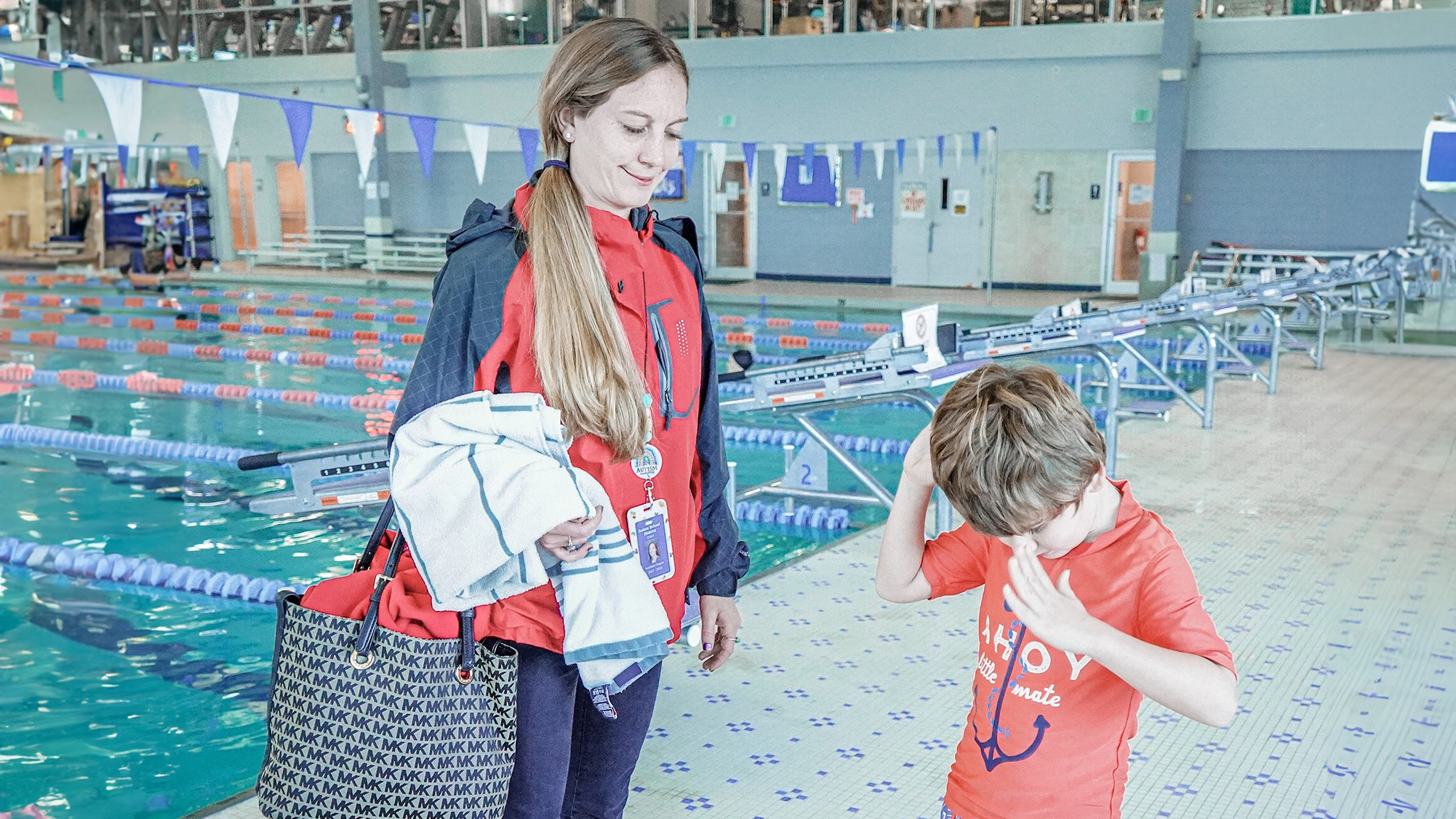
4. Start the Safety Routine at the Poolside
Create a safe entry routine into the pool that will be consistently practiced around all bodies of water. Consider how much support is needed to get the swimmer safely into the pool.
5. Spend a Few Minutes Observing Your Swimmer
Establish a relationship and start to build trust with your swimmer by seeing how they are reacting to the water. What is the child showing you that they need? This could range from fear and anxiety to sensory seeking.
6. Apply the Swim Whisperers® Formula
Start by introducing a swim skill. Identify the roadblock(s) that the swimmer is facing regarding this skill, utilize your Swim Whisperers(R) strategies to overcome the obstacle and return to teaching the swim skill with more success.
7. Weave In & Out of the Swim Whisperers® Strategies
Assess and identify roadblocks and apply Swim Whisperers® strategies and techniques as needed to keep your swimmer progressing with their swim skills and engaged in the lesson.
8. Establish a Ritual & Routine to End the Lesson
Ensure swimmers remain calm and organized and prepare them for a safe exit from the pool. Remember to give a pre-warning to the swimmer that the lesson is coming to an end and routinely end the lesson with the same activities, to help with a smooth exit transition.
9. Involve the Parent/Caregiver During the Exit from the Pool
Safely ‘hand over’ your swimmer to their parent/caregiver. Think about an engaging way to say farewell to your swimmer.
10. Encourage Your Swimmer to Work On A Skill At Home
Suggest a skill that can be easily practiced at home or ask the parent/caregiver to review any photos/videos from the lesson with the swimmer, so that they are prepared and excited for their next lesson.
Swimming and Autism: Water Safety Tips
Looking for ways to establish water safety routines with your Autistic swimmer? Dive into these 3 key tips for swimmers with Autism, low muscle tone, and other special needs. Learn how to improve safety through practices like asking permission, holding onto the pool wall, and using flotation equipment.
Want to know more about Adaptive Aquatics?
The Swim Whisperers Advanced Training in Adaptive Aquatics certification program will complement your existing swim curriculum. The Adaptive Swim Whisperers® certification program uses the Swim Angelfish Methodology to empower swim instructors to assess and identify roadblocks, seamlessly integrating them into their curriculum.
Our adaptive swim program certification strengthens your swim curriculum by providing you with an effective, time-tested toolbox to serve all swimmers including Autism, Anxiety, Motor issues, Physical, Sensory, Delays, Discomfort, and Trauma.
Join over 700 Swim Whisperers trained in advanced adaptive aquatics, who are using the toolbox with immediate life-changing results. Our training program and content is constantly evolving and being updated.
Scholarships are also available – Apply today.
